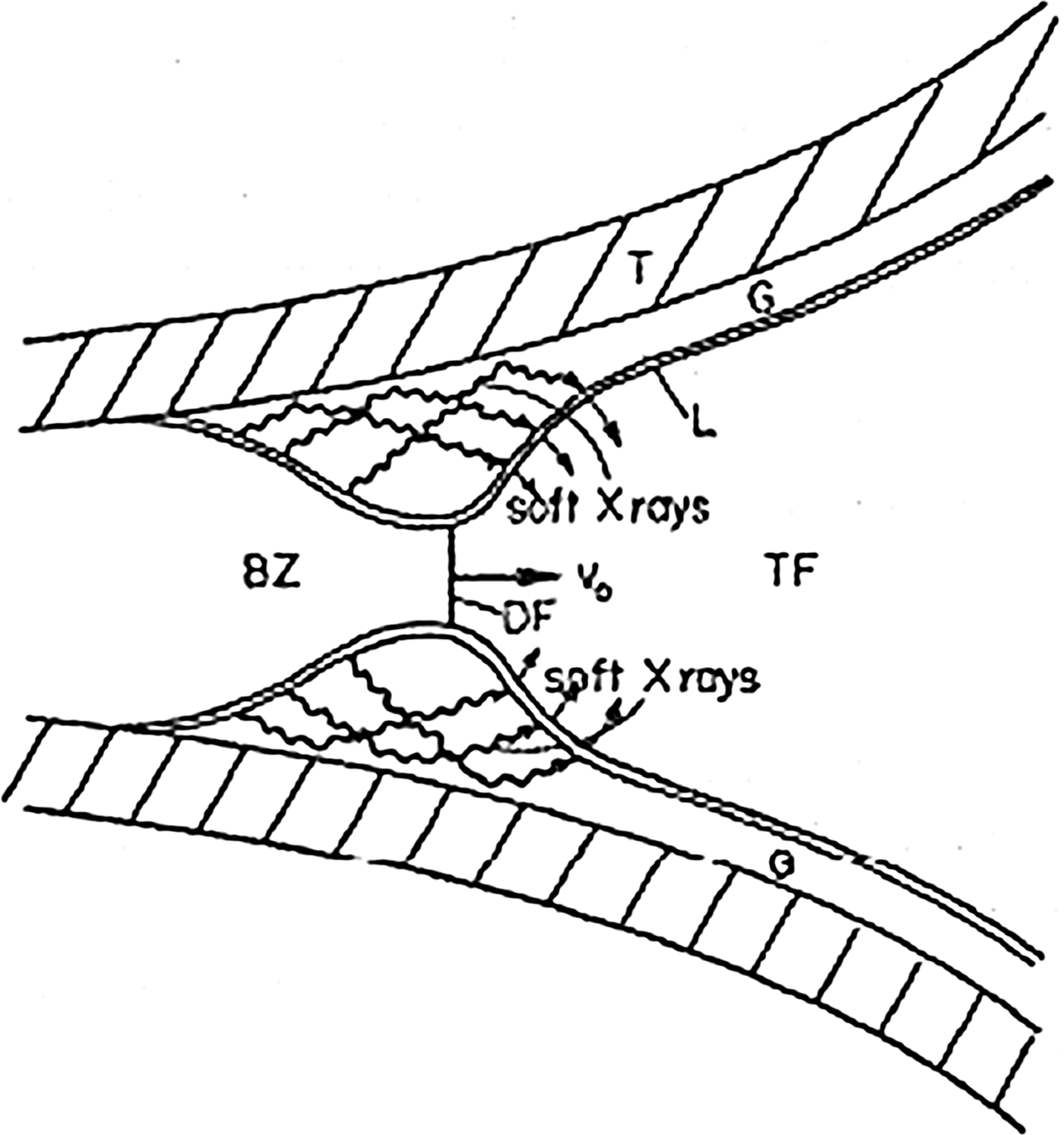The proposal made by the above named authors is really not new, and was anticipated about 33 years ago in a paper published in Atomkernenergie – Kerntechnik Bd. 39 (1981), 264-270 under the title “Thermonuclear Detonation Waves (Part II).” It was also published in the same year in “The Physical Principles of Thermonuclear Devices” by the Fusion Energy Foundation in New York. While these two publications may have been less known, this cannot be said about my textbook “The Release of Thermonuclear Energy by Inertial Confinement — Ways towards Ignition” (pp. 194, 195, 198), published by World Scientific in 2010. I had called the concept “Autocatalytic Detonation.” It is explained in Figure 3 in the first publication, here reproduced:

Fig. 3. Autocatalytic detonation wave using soft X-rays for fuel precompression. TF thermonuclear fuel. DF detonation front, BZ thermonuclear burn zone, L dense metal liner, G gap, T tamp.
There are of course differences between the proposals. Both have in common that the energy released in the burn zone is in the form of soft X rays at high speed transported ahead of the burn zone making the burn wave move at supersonic velocities.
In the proposal by Ramis and Meyer-ter-Vehn a solid DT cylinder is placed inside a high-Z tamp is imploded and compressed to a density of 100 g/cm3 “by a heavy ion beam, wobbling the beam around the axis”. The problem with this idea is the Rayleigh-Taylor instability which due to sausage instabilities along the cylinder is not less than for a spherical implosion geometry, which failed to reach ignition with the 2 MJ Livermore laser.
In the “autocatalytic detonation concept” the compression is done by the burn itself through the fast undirected 1/3 velocity of light radiation transport in the vacuum between the liner containing the DT and the outer high Z-tamp. And because the compression is here done in unison with the burn wave there are no other than the much less serious burn-wave instabilities.





